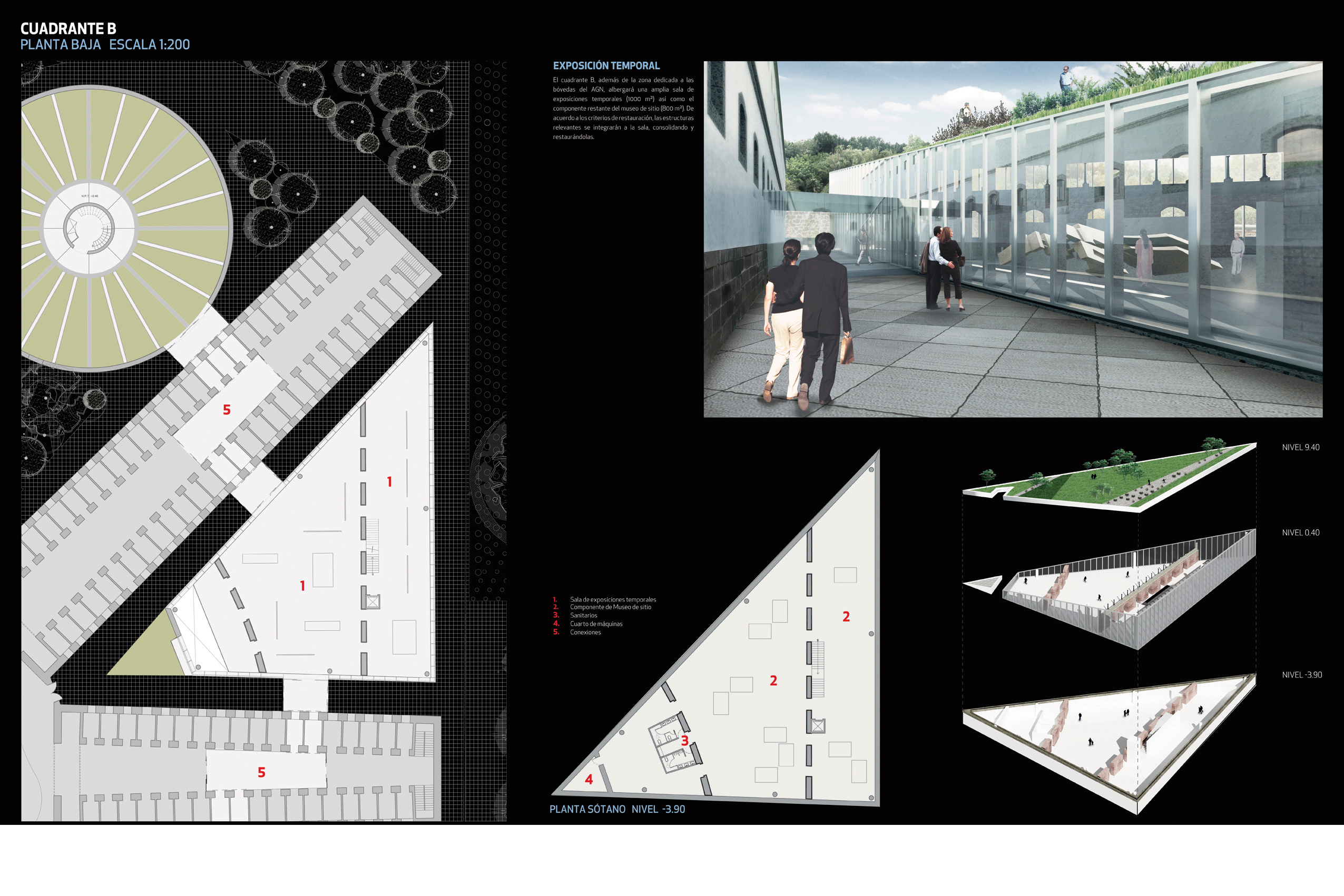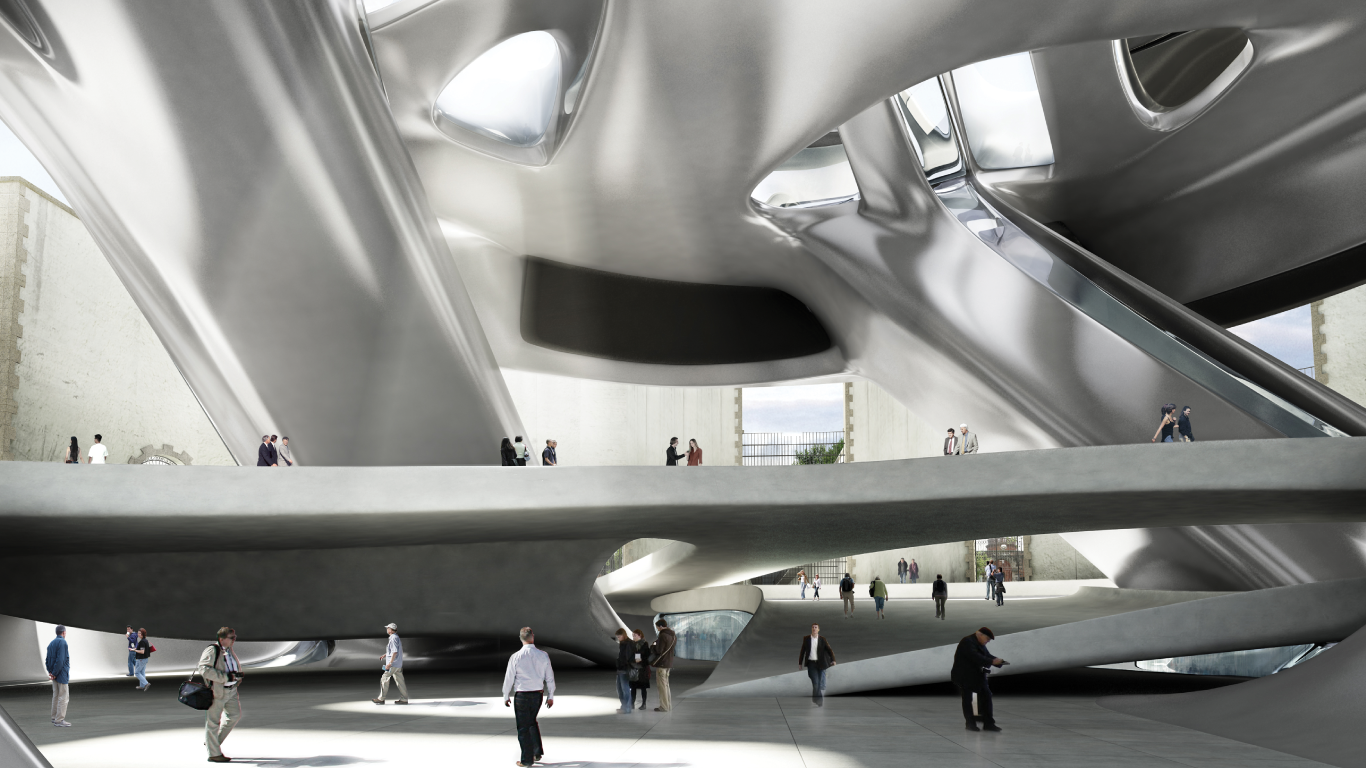
Over the years, this building’s long and controversial history has undergone several transformations in order to adapt the property to the uses that were required by the changing times; it was conceived in 1882, built a few years later and expanded in 1910. The most obvious intervention, and probably the one that saved the structure from being dismantled, was the transformation begun in 1982 to house the National Archive. The building is literally an old canvas, which has been painted over on several occasions.
Michel Rojkind (Principal)
Gerardo Salinas (Partner)
Alonso de la Fuente (Project Manager)
Rafael Cedillo
Daniela Bustamante
Yasser Salomón
Alejandro Argumedo
Carlos Ríos
Tere Levy
Andrea León (Office Manager)
Monique Rojkind (Media)
Interior Design
Agent: Alberto Villareal Bello, Isaac Smeke, Victor Lopez Aleman, Enrique Fernandez de la Barrera
Structural Engineer
Studio NYL: Julian Lineham, Christopher O’Hara
Roof Structural Engineer
Studio NYL
Architectural Historial Consultant
Rafael Fierro
Museography Consultant
Patrick Gallagher
Urban Planner
Arturo Ortiz
Design Computational Consultants
Kokkugia: Roland Snooks, Robert Stuart-Smith
Graphic Design
Fhillip Navarro + Welcome Branding: Ernesto Moncada
The proposal emphasizes the restoration of a building that preserves the nineteenth-century ideas of a vanguard prison, applying the Panopticon provisions proposed by Lorenzo de la Hidalga and reinterpreted by Antonio Torres and Antonio M. Torrija Anza (1882/6-1910), recovering some of the original dimensions of the project, respecting the transcendent intervention and adding a contemporary print.
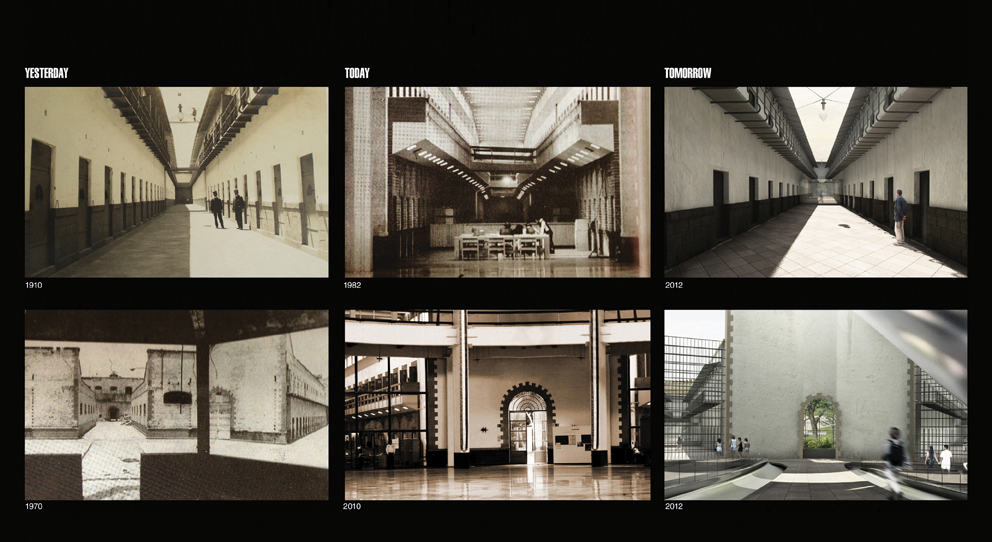
Photo © Rojkind Arquitectos
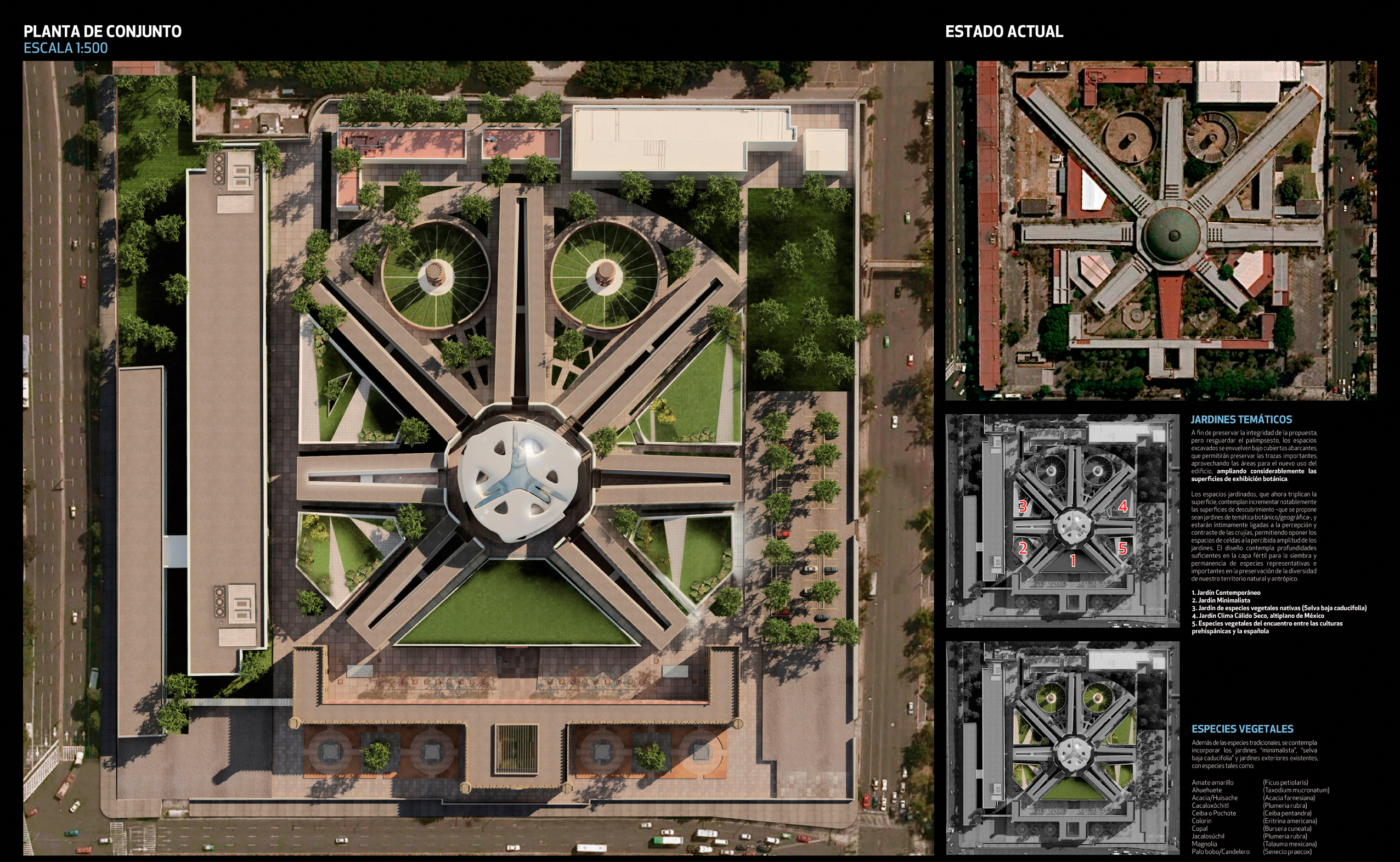
The idea of rescuing the Panopticon reflects the need to give the museum a clear outline site that visitors can observe as part of the history of Mexican society, keeping the most evocative spaces free from distractions.
In order to accommodate the spaces with the absolute correctness defined in the program for the site museum, we proposed to use the residual spaces – those that are not part of the original star – in order to accommodate the units, removing them from the spatial sector, with the purpose of allowing a clear reading of the original building. To achieve this, we would need to excavate the perimeter; preserving, rescuing and consolidating the relevant remains.
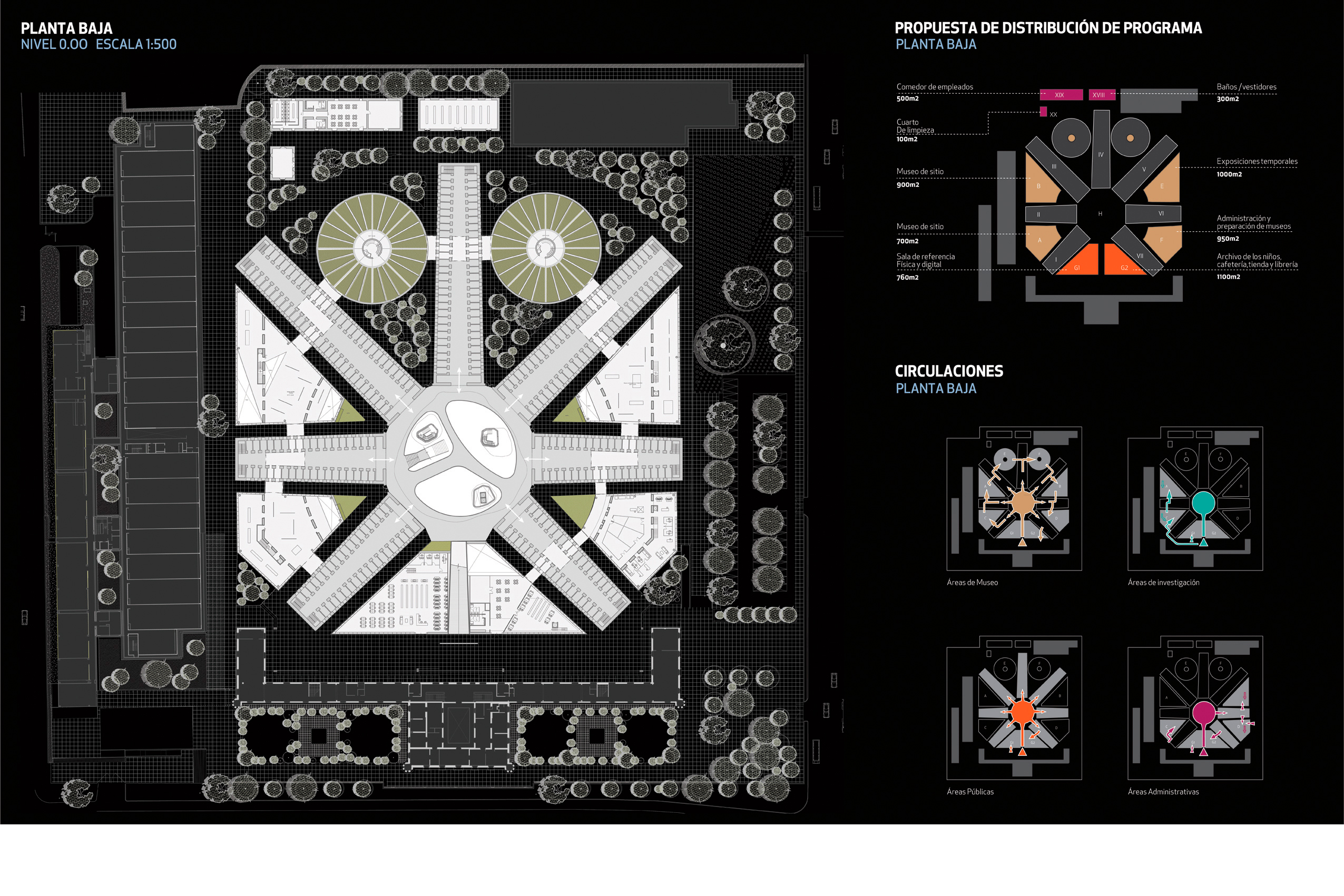
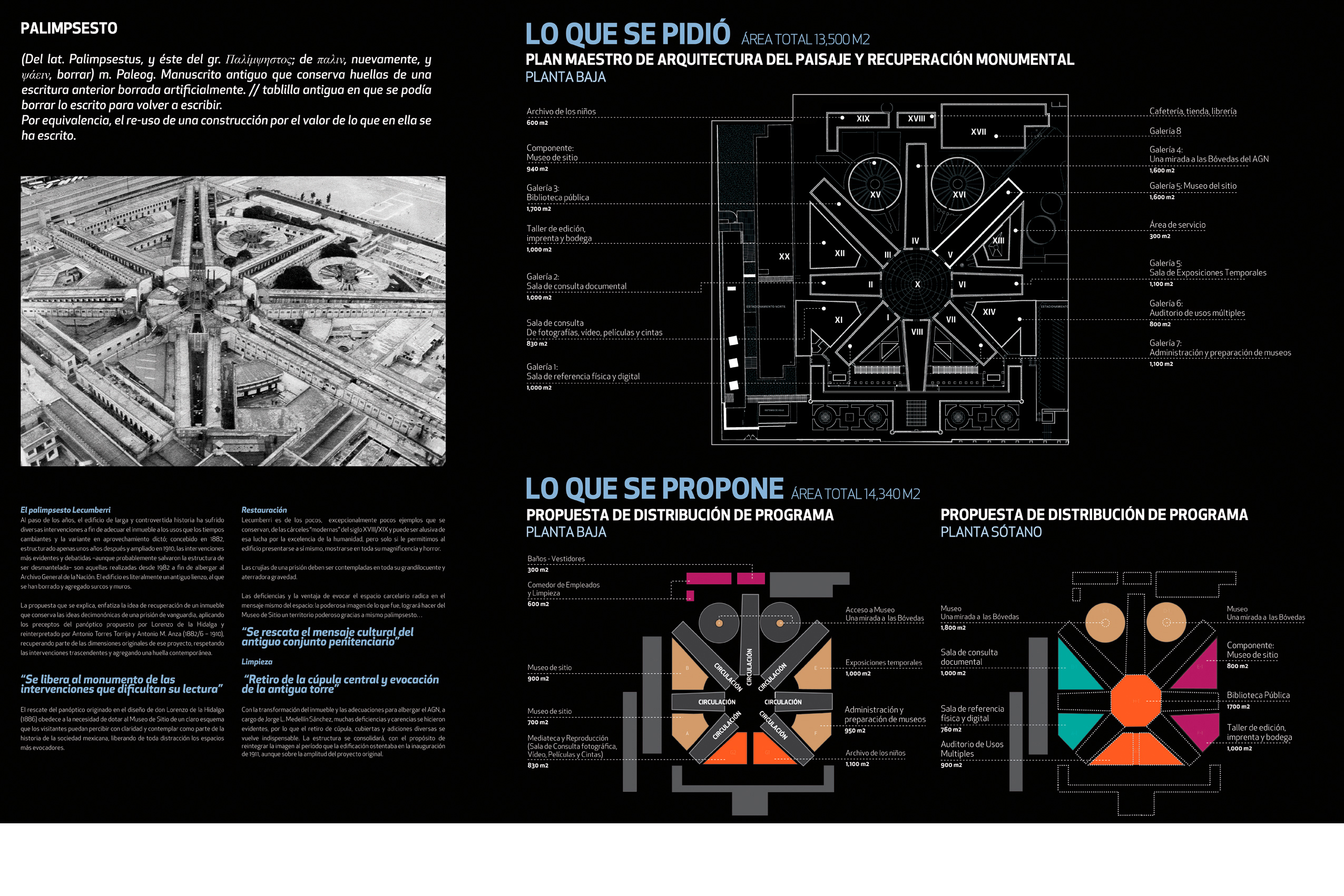
To preserve the integrity of the proposal while protecting the palimpsest, the excavated areas are wrapped, respecting the important traces, taking advantage of the areas for the new use of the building and greatly expanding the botanical display surfaces.
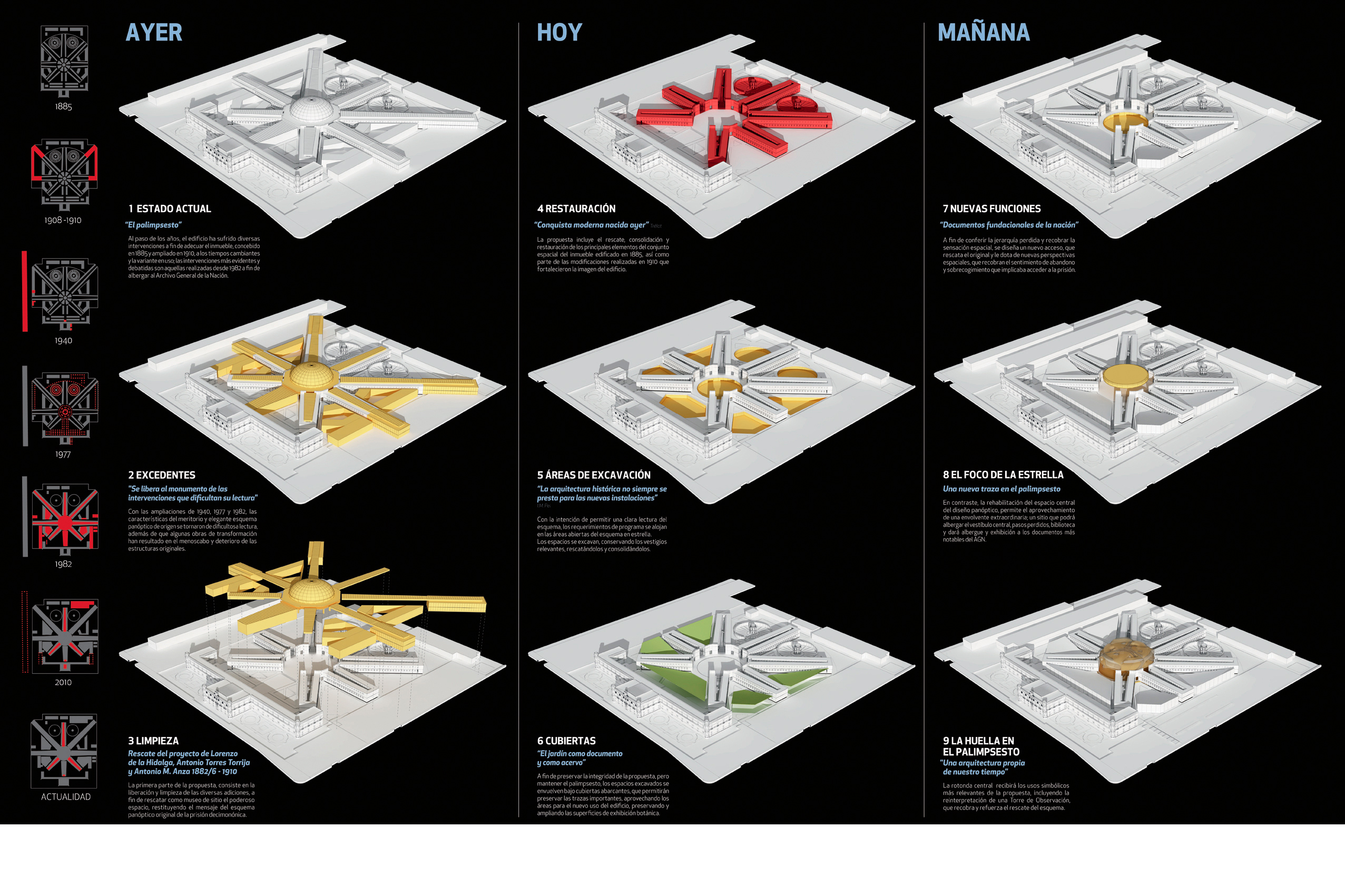
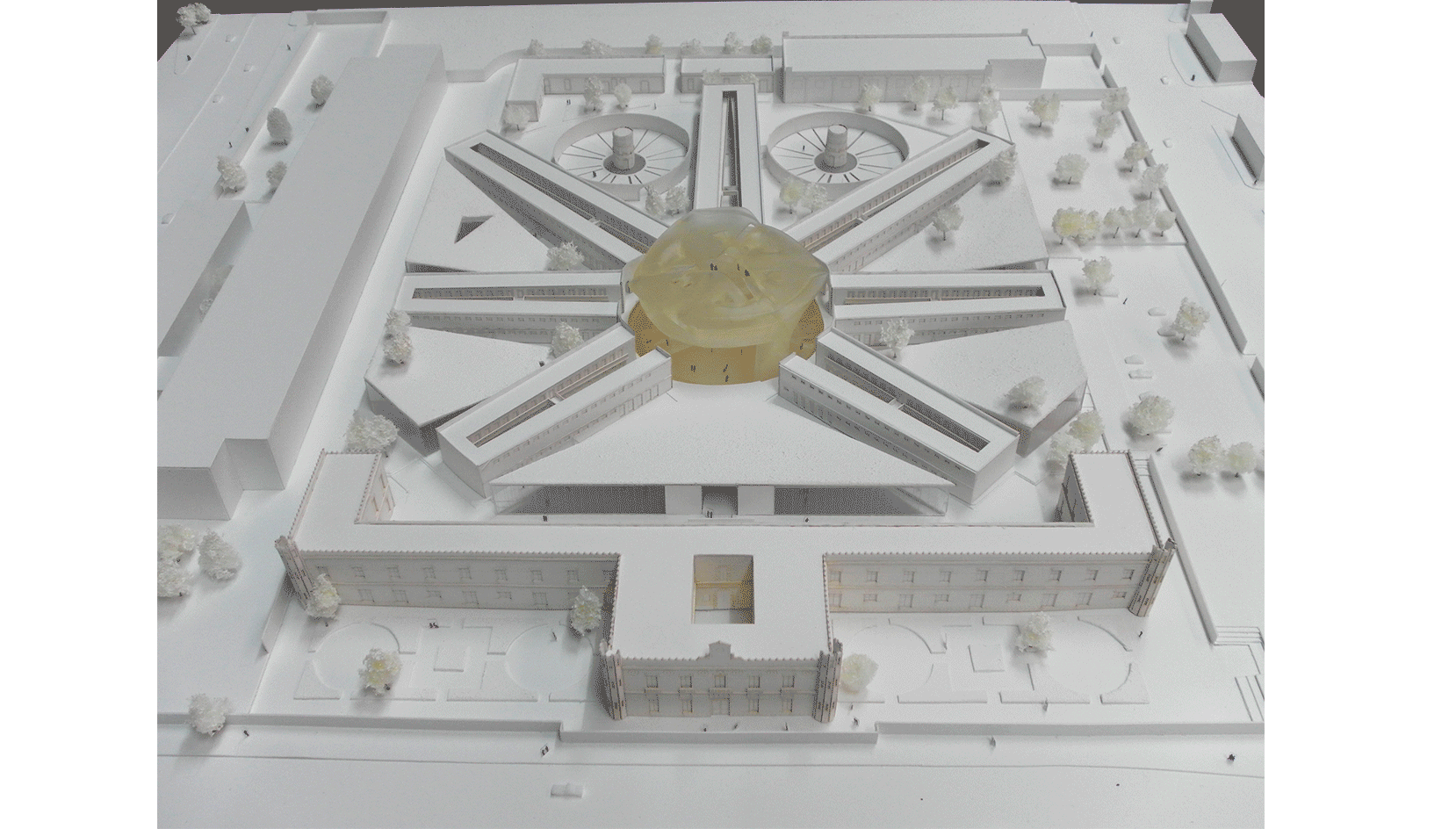
Model © Rojkind Arquitectos

Sections © Rojkind Arquitectos
The spacious garden, now three times bigger on the surface area, will be closely linked to the perception and contrast of the bays, creating a contrast of the cell sites with the magnificent gardens.
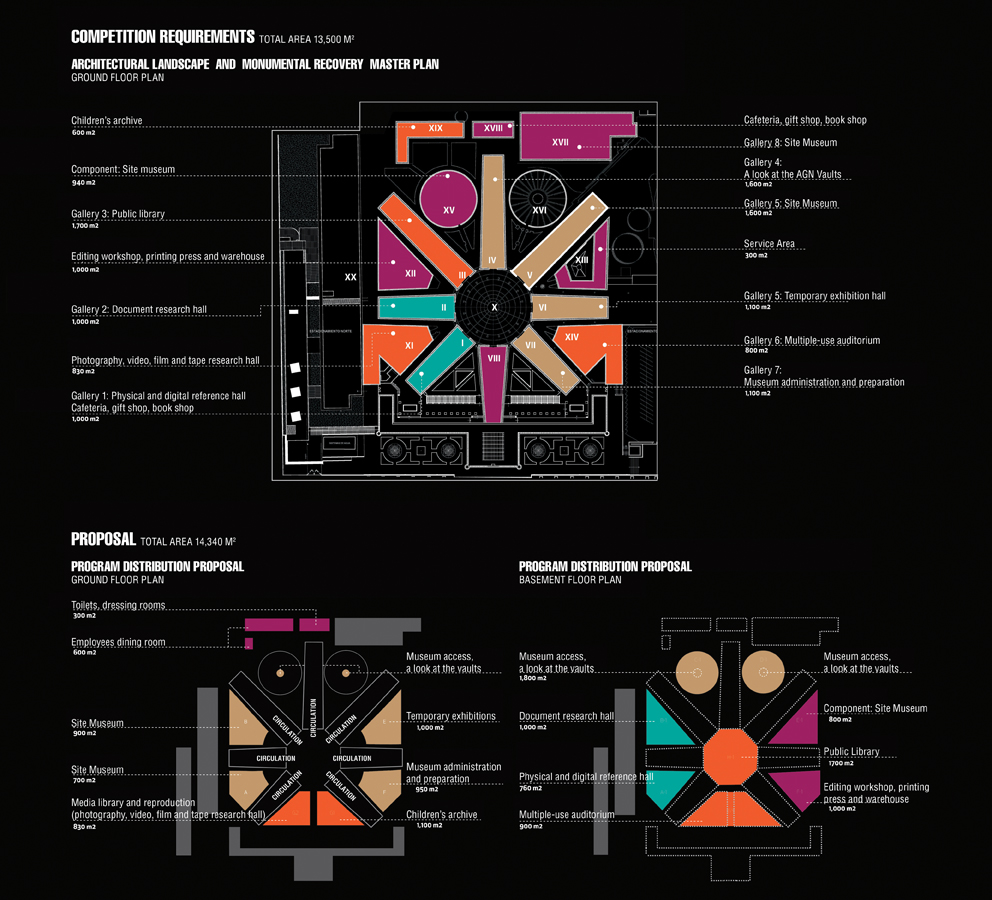
Diagram areas © Rojkind Arquitectos

This design provides enough topsoil for planting and growing representative and important species for the preservation of diversity.
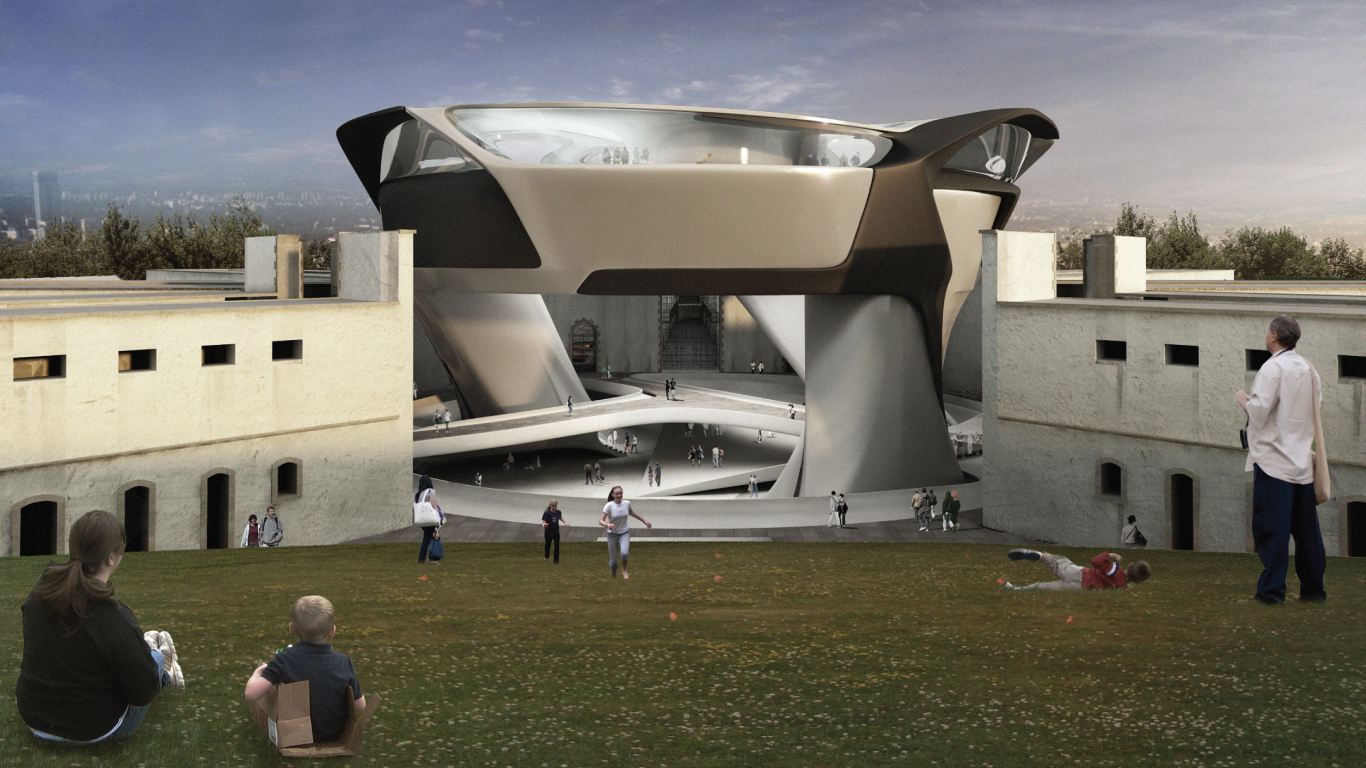
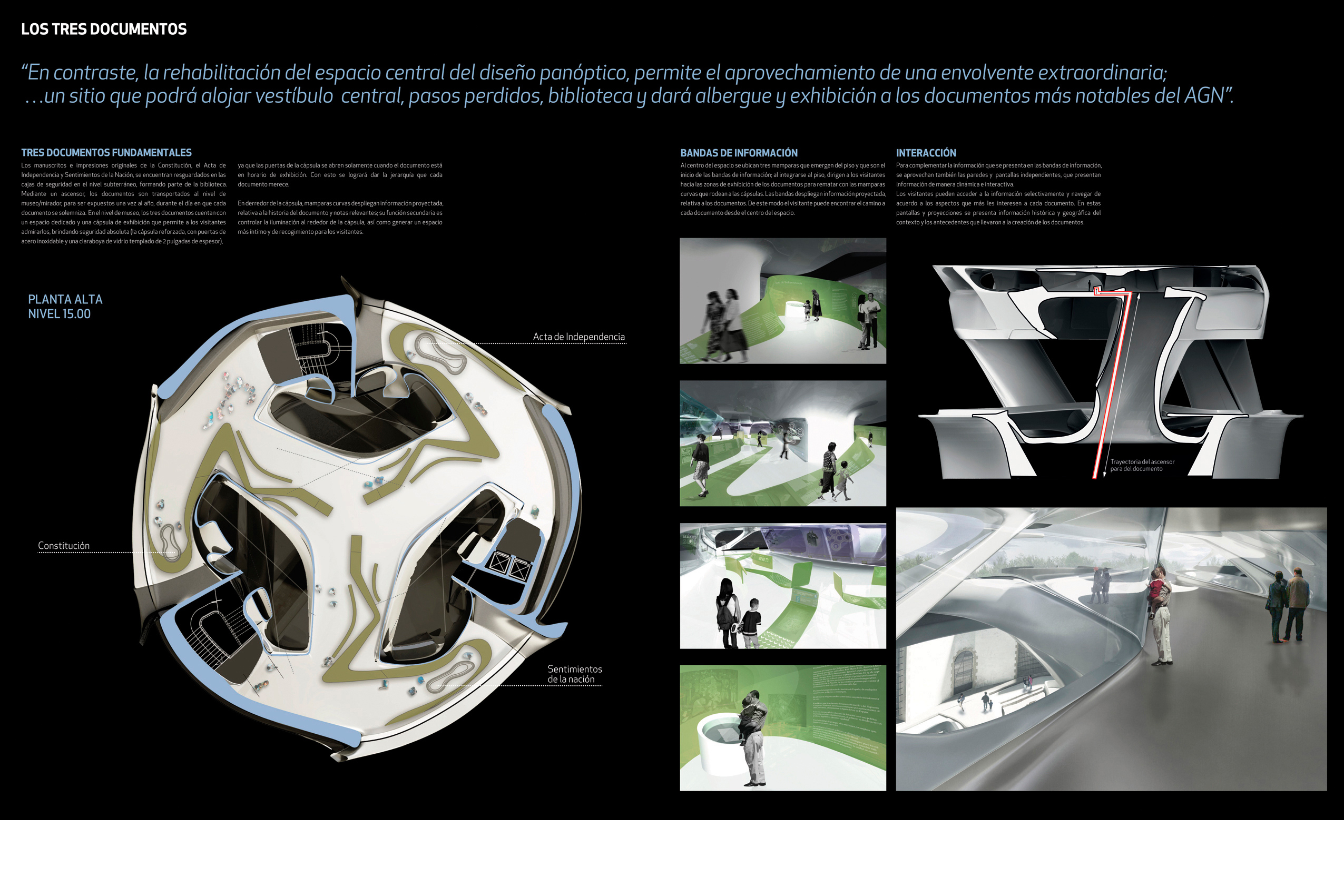
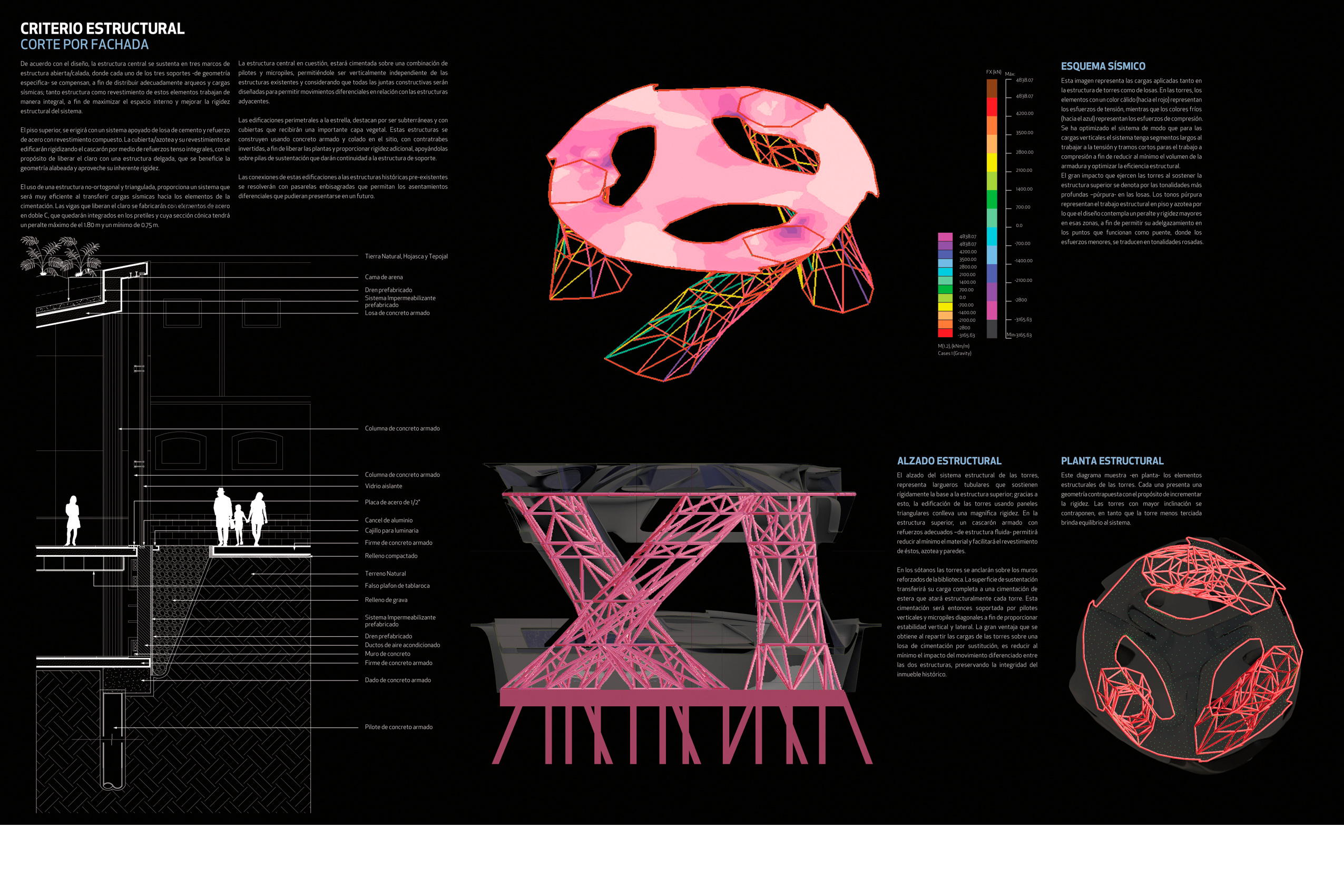
The requirements program for the Master Plan’s building, develops entirely with idealistic lighting and ventilation in the excavation areas, providing the building with a ceremonial lounge for the documents exhibition
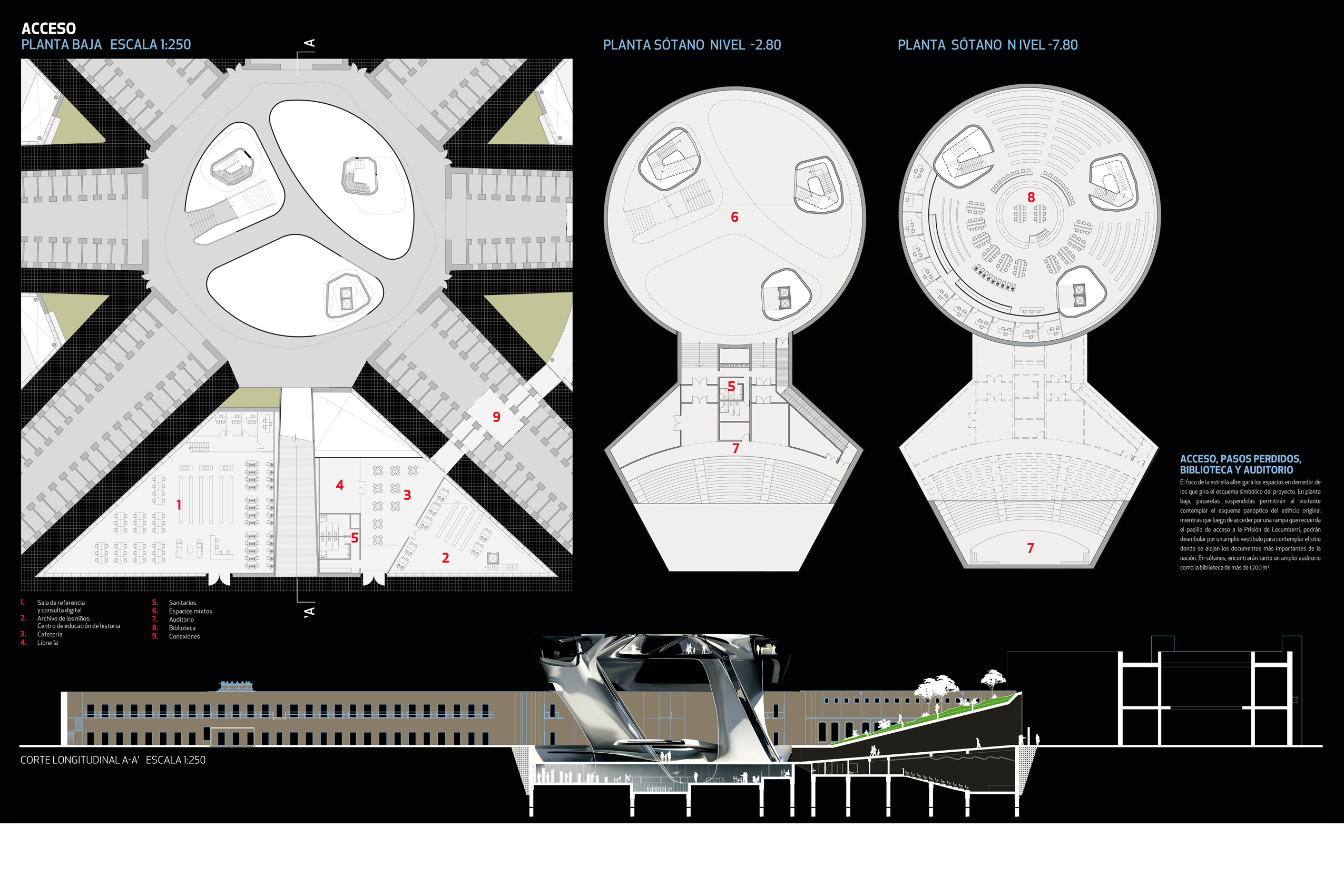
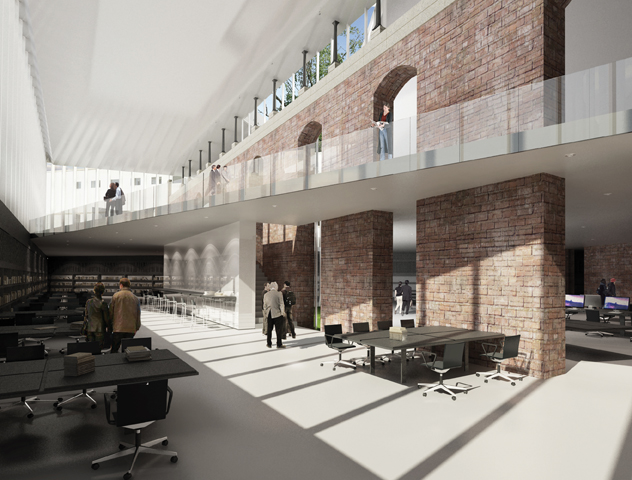
Render © Rojkind Arquitectos
The centreline has to be contemplated within the whole greatness and scary reality that it holds, therefore the main purpose is to left this spaces without evident use. This empty spaces are going to be a surprise for those who are wandering around because they will serve as a representation of the exterior and the freedom itself.
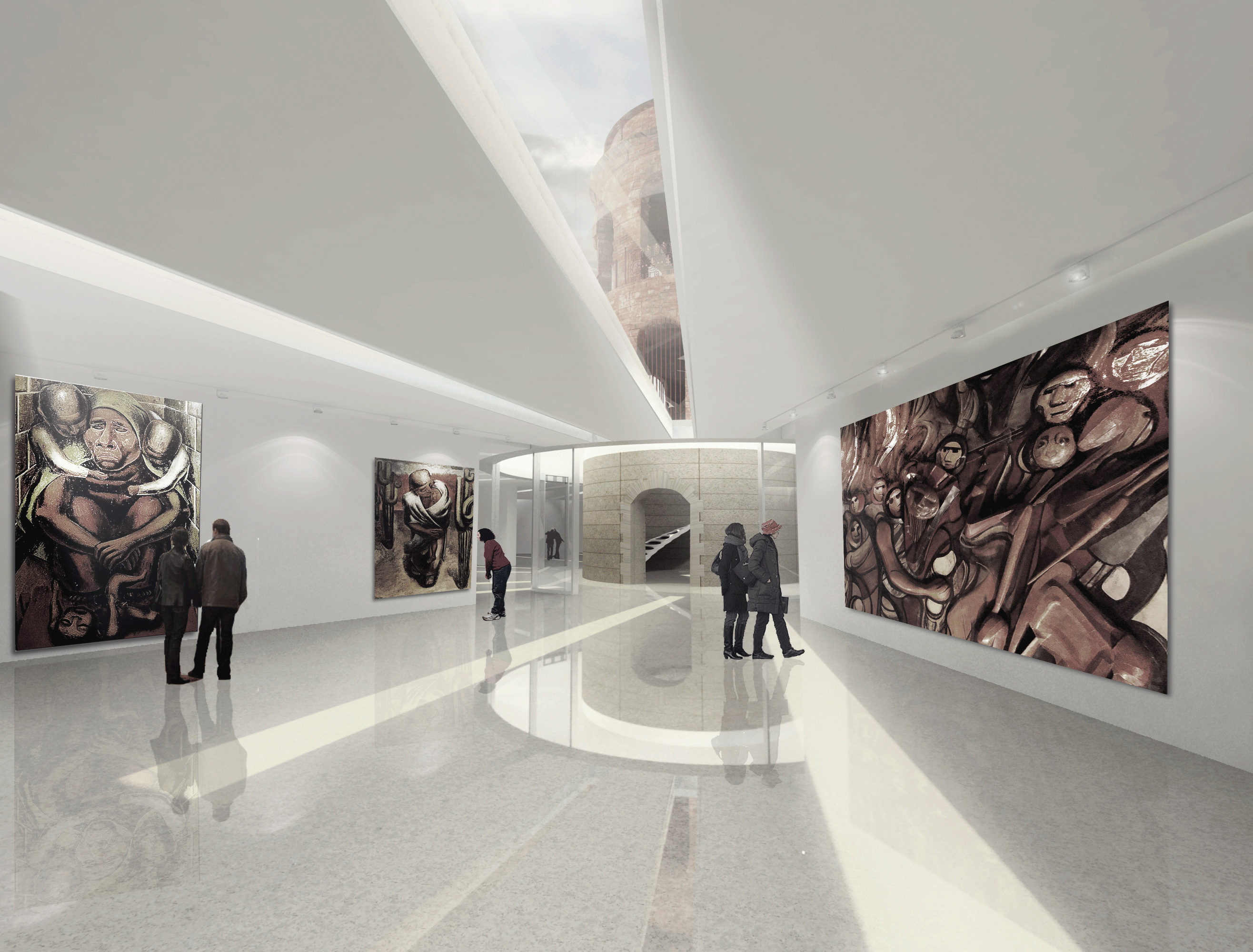
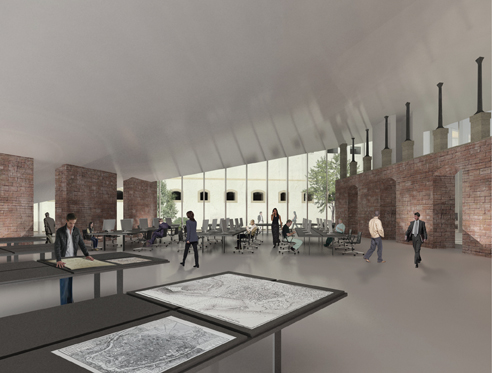
Render © Rojkind Arquitectos
The rehabilitation of the central space in the panopticon design, allows to take advantage of the extraordinary cover; this site will hold the central lobby, the library and the main and more remarkable AGN documents exhibition.
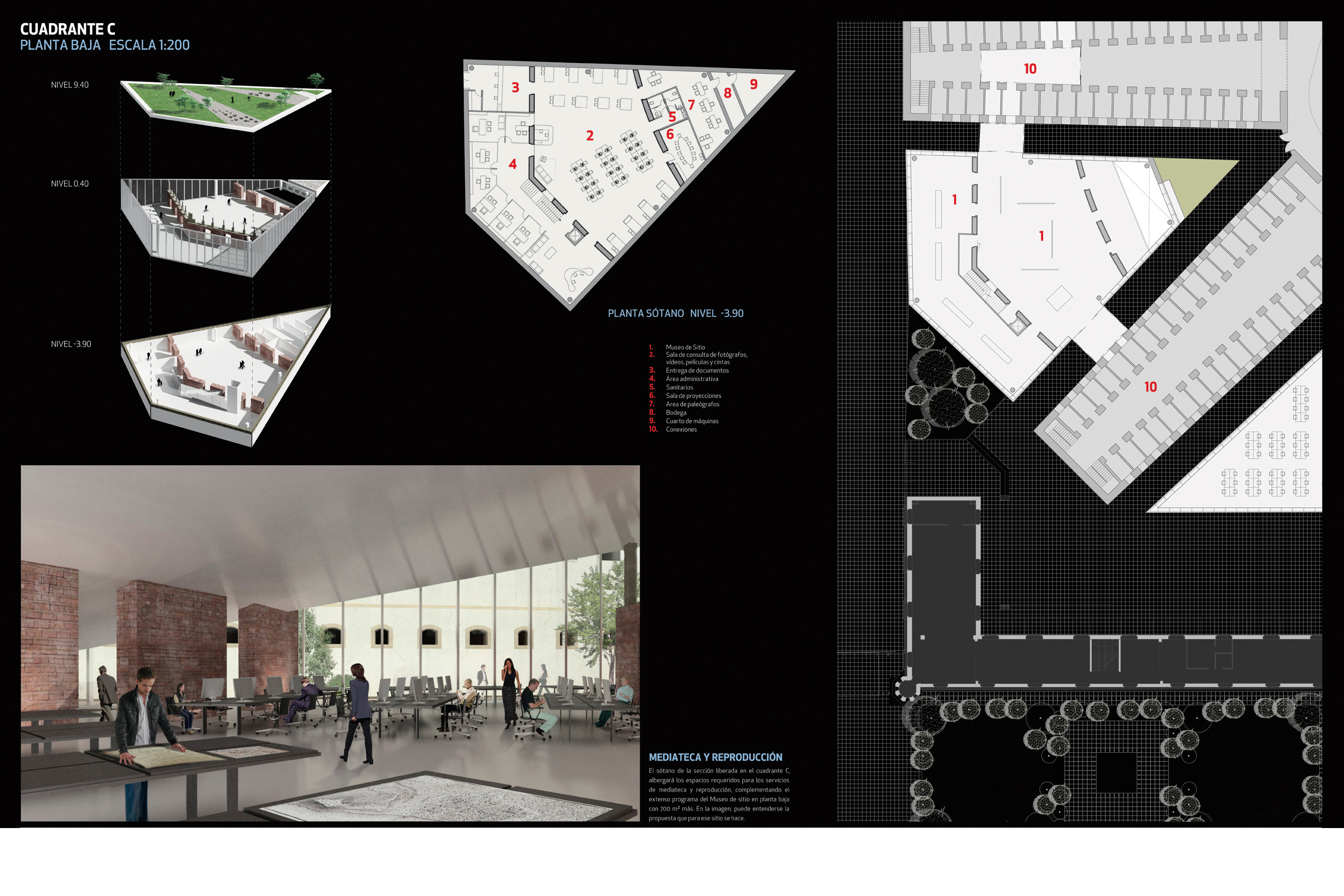
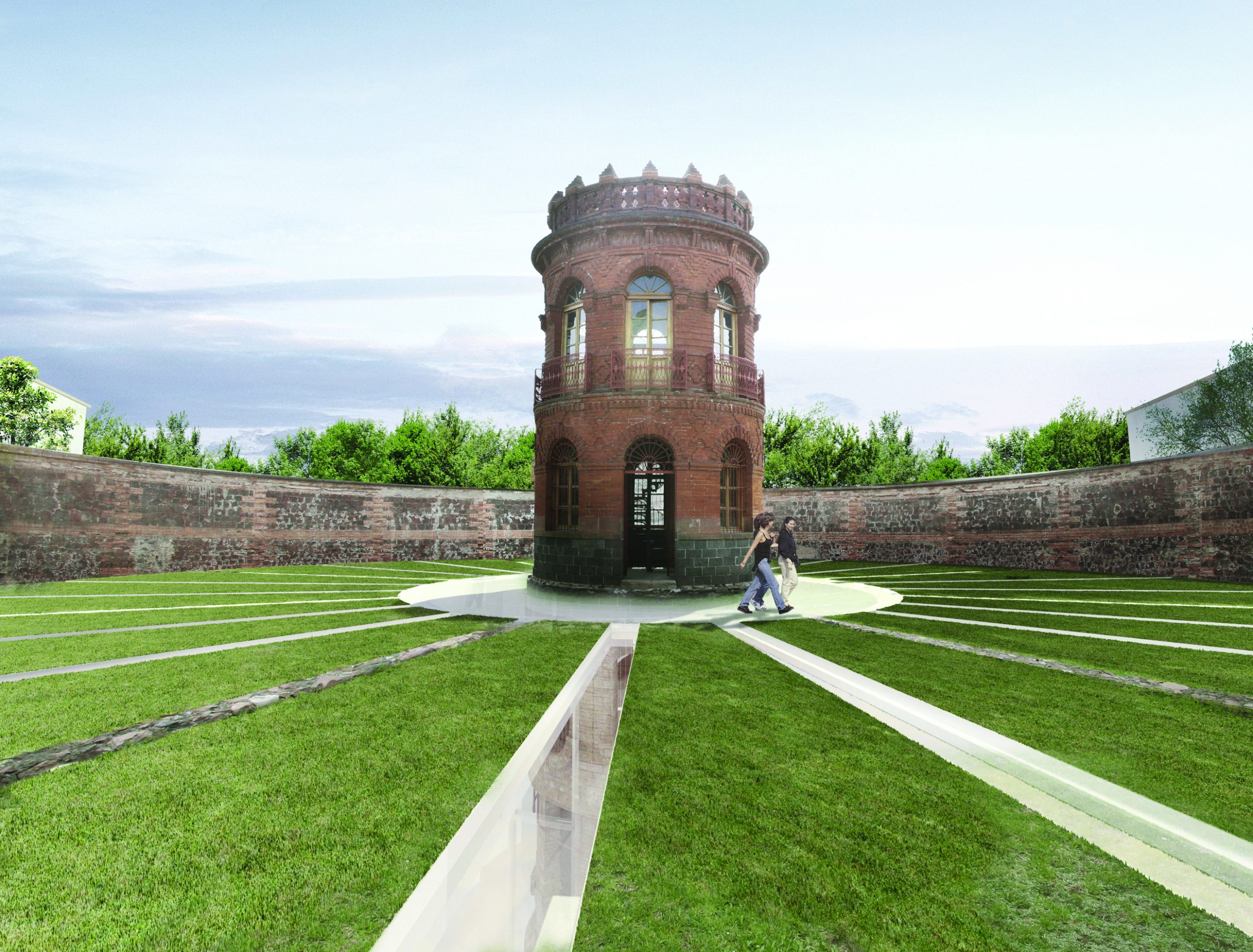
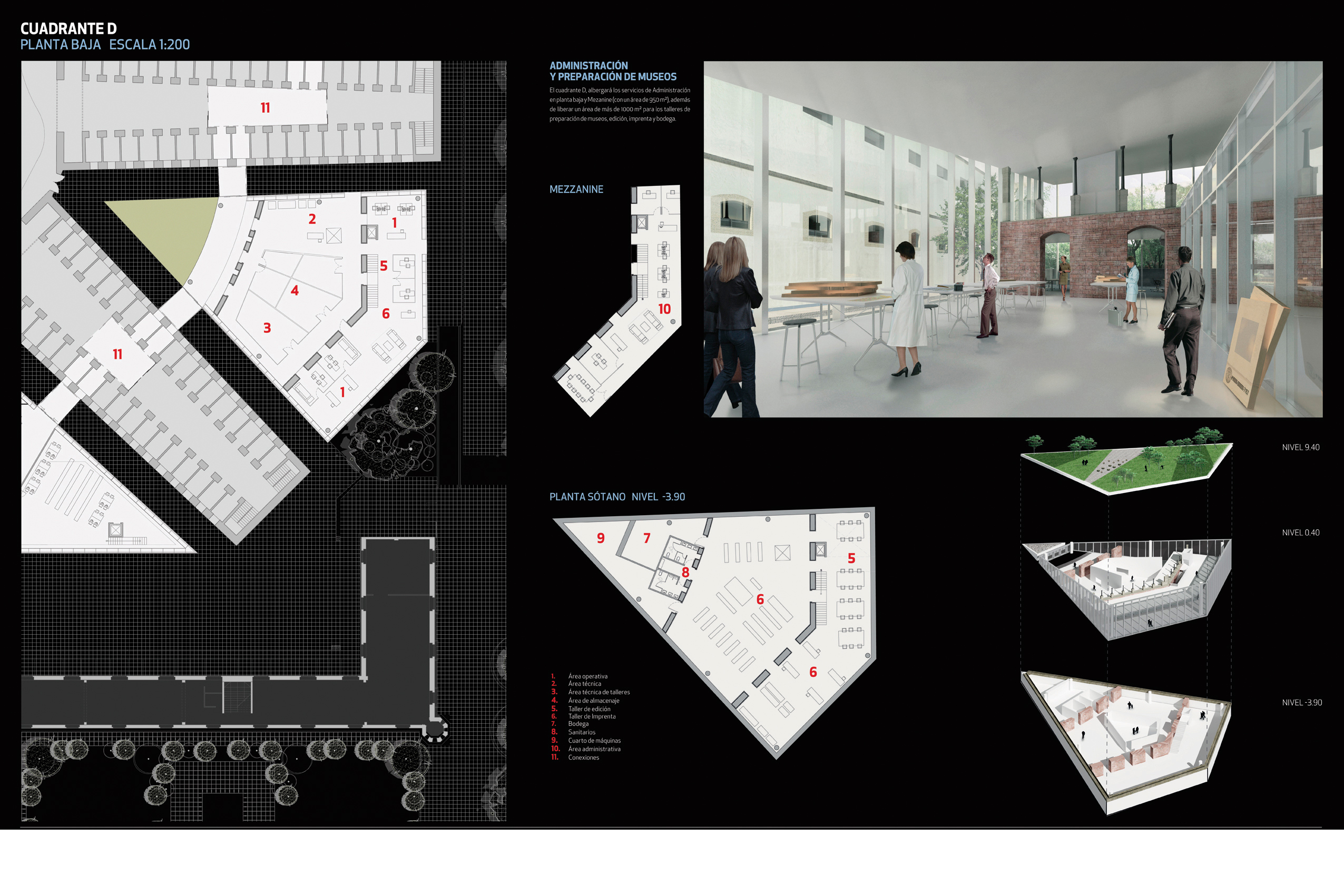
It is the reposition and the reinterpretation or the vigilance tower, where central circuit will contain the most relevant and symbolic uses of the project, a new palimpsest print.
